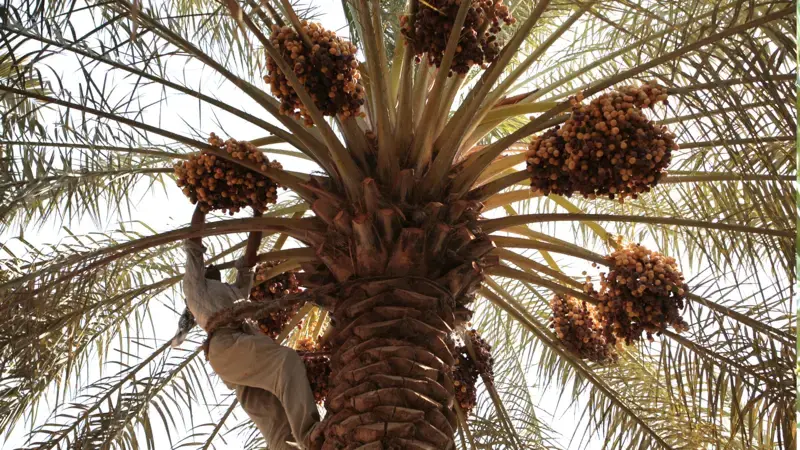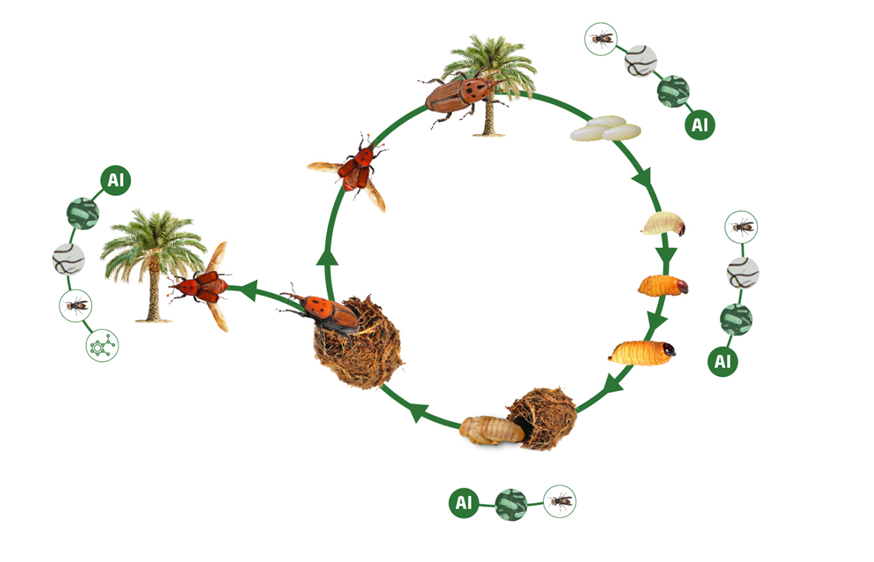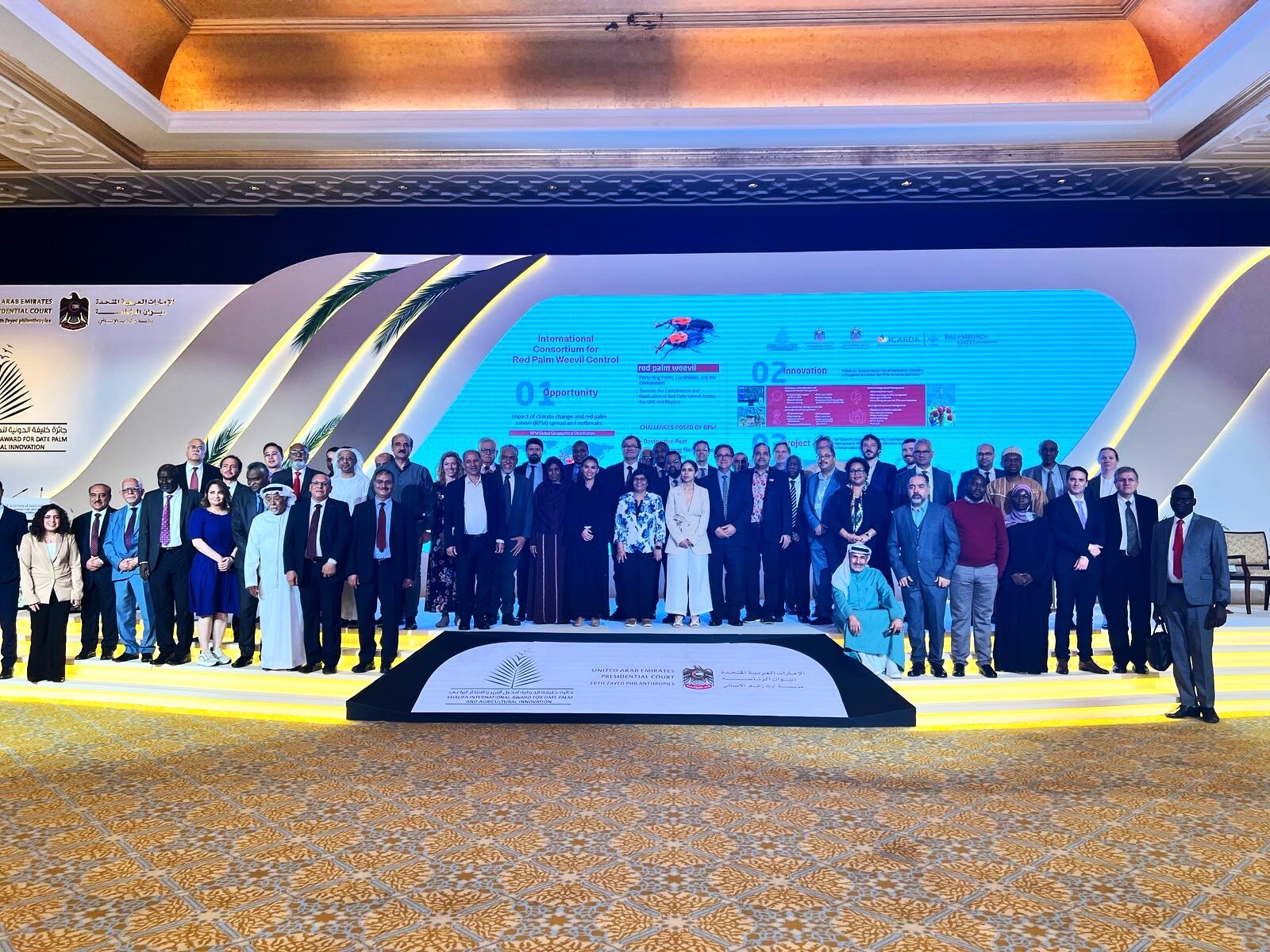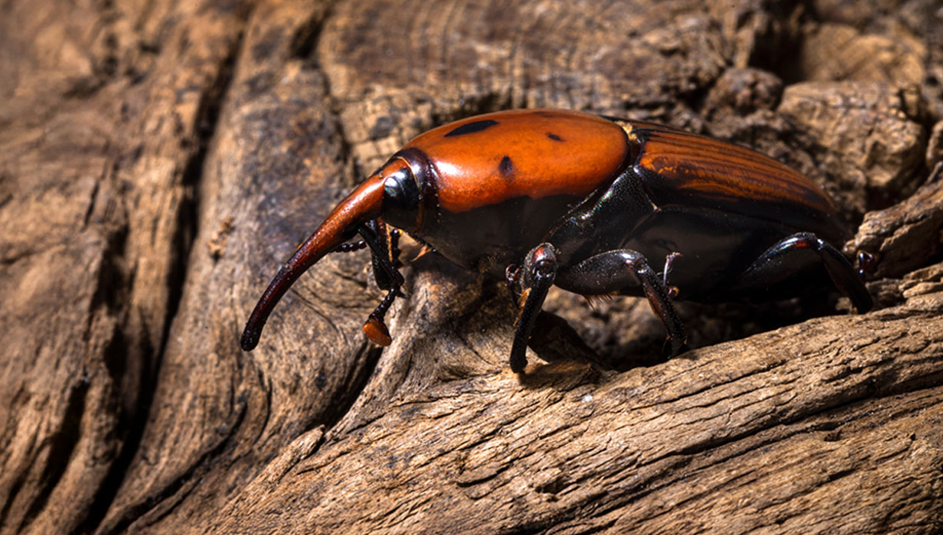The Palm Tree’s Silent Struggle and Why It Matters

May 12 marks the International Day of Plant Health, a timely reminder that plants are not just part of the scenery; they are the foundation of life on Earth.
Plants provide 80% of the food we eat. Among the most insidious is the Red Palm Weevil.
First identified in South Asia, the Red Palm Weevil has now marched across 49 countries, leaving a trail of devastation. Each year, it is responsible for an estimated $2 billion in crop losses, the infestation of 35 million trees, and the disruption of 50 million farmers’ livelihoods.
The pest's lethality lies in its stealth. Unlike locusts or fungal blights, the weevil does not announce itself with spectacular swarms or withering leaves. Instead, its larvae burrow deep into palm trunks, hollowing them out from within until the trees, once symbols of prosperity and resilience, collapse without warning. By the time external symptoms appear, it is often too late.
The Red Palm Weevil is a global threat, but it is in the Gulf, home to ancient date palm traditions, that the battle has become most urgent.
Turning Research into Action

Recognizing the magnitude of the threat, the United Arab Emirates and the Gates Foundation have supported the Consortium for Red Palm Weevil Control (C4RPWC) — a coalition of national, regional, and international partners, determined to stop the pest in its tracks. C4RPWC was officially launched last month at the 17th Khalifa International Award for Date Palm and Agricultural Innovation in Abu Dhabi.
At the heart of this effort is ICARDA, serving both as consortium coordinator, lead institution for scaling research breakthroughs into tangible benefits for farmers, and co-lead in other program workstreams.
In the words of Aly Abousabaa, Director General of ICARDA and CWANA Regional Director, CGIAR:
"The fight against Red Palm Weevil requires science-driven solutions, strong partnerships, and actionable strategies."
The C4RPWC does not place its hopes in any single silver bullet, though it would be ideal if such a silver bullet is found and successfully used. Instead, it has built a comprehensive plan around five pillars of action:
Biobased Solutions, using natural enemies, eco-friendly biopesticides, and smarter trapping techniques.
Biotechnological Innovations, employing gene editing and sterile insect techniques to suppress weevil populations at the genetic level.
Digital Innovations and Big Data Analytics, deploying remote sensing, acoustic IoT sensors, and AI-powered risk prediction maps to detect infestations before they spiral out of control.
Good Agricultural Practices, focusing on strengthening palm health through better irrigation, certified seedlings, and pest-resistant varieties.
Scaling Research into Action, ensuring that innovations move beyond the laboratory to reach farmers’ fields and policymakers’ agendas.
Science, Policy, and Markets Align

The stakes are considerable. Beyond the environmental and economic toll, the overuse of synthetic insecticides, currently one of the few tools at farmers' disposal, is taking a heavy toll on human health and biodiversity. New research under the C4RPWC banner is poised to significantly reduce pesticide reliance and deliver cleaner and more environmentally friendly and resilient palm production systems.
Technology providers, including private-sector firms, have been enlisted to ensure that solutions are scalable and commercially viable. Meanwhile, research institutions, including sister CGIAR centers, bring deep expertise across disciplines ranging from molecular biology to digital agriculture.
The UAE’s leadership has been pivotal. As Mariam Almheiri, Chair of the International Affairs Office at the UAE’s Presidential Court, notes:
"This groundbreaking work is a testament to the UAE’s commitment and global leadership on food security, agricultural innovation, and giving small-scale farmers impactful tools to make correct decisions."
A Cautionary Tale and a Blueprint

The Red Palm Weevil’s rampage is not unique. Invasive species are proliferating in an era of global trade and climate disruption. What makes the C4RPWC significant is the ambition of its scientific agenda and the clarity of its approach: global interdisciplinary cooperation, sustainable solutions, early warning systems, and farmer empowerment as the first line of defense.
As Bill Gates put it:
"Even without climate change, agriculture represents a vast investment opportunity, especially when addressing issues like low income and malnutrition."
Indeed, investing in plant health is no longer a luxury, it is a necessity. The silent collapse of a palm tree in a remote oasis may seem like a local misfortune. In reality, it is a microcosm of a much larger struggle for the sustainability of food systems worldwide.
This International Day of Plant Health, the lesson is clear: to protect plants is to protect economies, ecosystems, and livelihoods.
The Red Palm Weevil may be a formidable enemy, but with science, collaboration, and political will, we will surely win the battle.
